One of the most analyzed silent films. One of the most watched silent films. One of the most famous silent films. What else is there to be said about The Cabinet of Dr. Caligari? Well, I’m giving it a shot. We’re going to see if we can unravel the mystery of the film’s meaning. A daunting task? Only slightly.
Home Media Availability: Released on DVD, Blu-ray and via streaming.
Movie 101: Stay away from carnivals!
We are going to be doing things a little differently this time. There are approximately 12 billion reviews of Caligari already online (many quite good) and whole books dedicated to German film of this period. My goal is to create something fun to read and accessible for the casual classic film viewer. So forgive me if I don’t go into enormous detail since there is a lot to cover.

Hold on to your hats (or Hüte as the case may be), here we go.
The movie opens with Francis (Friedrich Feher) telling his strange tale to an elderly man.
It seems that a carnival came to Francis’s town of Holstenwall…
With the carnival comes the mysterious Dr. Caligari (Werner Krauss). Caligari immediately has a tiff with the town clerk and, funny thing, the next morning the clerk is found murdered.
Meanwhile, Francis’s enthusiastic best friend, Alan (Hans Heinrich von Twardowski), wants to go to the carnival. The pair end up at Caligari’s tent, where he is advertising his spectacle: a somnambulist.
Cesare (Conrad Veidt) has slept for all of his 23 years and is under the complete control of Caligari. Further, the doctor claims that Cesare can see the future. Alan calls out his question, “How long will I live?” Cesare answers, “Till dawn.”
Creepy.
Alan is upset but recovers when he and Francis run into Jane (Lil Dagover), the daughter of the local doctor. Both he and Francis are in love with her. Francis says that no matter which man she chooses, they will remain friends.
But wait. Go back. How did Cesare know when Alan would die, you ask? Well, oddly enough, a shadowy and very Cesare-like figure creeps into Alan’s room and stabs him.
Francis becomes consumed with finding Alan’s murderer. He suspects Cesare at once but Caligari is carefully covering his tracks. It is only when the somnambulist attacks Jane (and dies in the attempt) that the crime is finally linked to the doctor. Francis pursues him into a lunatic asylum where he has a shock: Caligari is in fact the asylum director!
With the help of the hospital staff, Francis is able to uncover Caligari’s terrible experiments and the doctor is himself committed.
Francis ends his narrative inside the grounds of the asylum. But wait, that’s Cesare, isn’t he dead? And Jane thinks she is a queen. What’s going on?
The asylum director enters, it is Caligari. Now matters are clear (or are they?), Francis is insane. Caligari looks at his patient and vows to cure him…
In addition to its distinct visual style, Caligari was also notable for being one of the first films to use an unreliable narrator. It is, however, not the first film to use a frame story, as is sometimes stated. To name one earlier example, Cecil B. DeMille’s 1916 film Joan the Woman used the frame story of a WWI soldier in the trenches having a vision of his past life with Joan of Arc. Flashbacks and footage demonstrating a narrative were quite common in the language of cinema by 1920.
The Cesare show
In addition to the amazing set design, the most popular element of Caligari is probably Cesare the somnambulist. Not the take away from the wonderful performances of the rest of the cast, of course, but Cesare remains in people’s minds. Why, you ask?
Well, because he looks like this:
In short, nothing looked like Cesare in motion pictures in 1920. The character has since been imitated but never matched for impact.
Is it just his looks that make him a memorable character? No, there’s more to it. First, Conrad Veidt’s creepy yet poignant performance as the unwilling killer makes the character believable. Co-star Lil Dagover stated that Veidt stayed in his role even between scenes and would frighten other cast members with his lurking.
Finally, the ambiguous nature of Cesare’s place in the story makes the character even more memorable. In fact, that leads us to the many ways Caligari has been explained…
But what does it mean?
Such a weird, wonderful film is sure to have different interpretations. Any work on film theory worth its salt must contain at least one reading of the film. I think you lose tenure or something if you don’t have your own explanation of what is going on in Caligari. It’s even better if you can debunk a rival theory at the same time.
Here are just a few to browse. They are extremely abbreviated so go to the cited source if you would like more detail. Choose to believe the one you like. Or more than one since these theories are not necessarily mutually exclusive.
It is a premonition of Hitler
That’s not me being melodramatic, that is how the film is described in Caligari to Hitler. The original authors of the scenario, Carl Mayer and Hans Janowitz, envisioned Caligari as an attack on authoritarianism in German society. Caligari stands for unlimited authority and Cesare symbolized the common man, driven to murder but a victim himself. However, at Fritz Lang’s suggestion, director Robert Wiene added the frame story that would invert the meaning of the tale and turn it from a revolutionary film to a conformist one. This theory has since been called into question as early drafts of the story do not support the author’s claims.
It symbolizes an entire world out of balance
According to A Critical History of German Film, Caligari is ambiguous as to whether Francis is mad and the doctor sane or vice versa. The set-bound film creates its own out-of-whack world that is twisted and unnatural. In the end, this funhouse mirror of a motion picture makes it impossible to believe that it is a simple tale of the mind of a madman. The whole world is mad.
It reflects fears of mind control
According to Weimar Cinema, Caligari was tapping into the psychological vogue of discovering just how suggestible the human mind is, particularly under hypnosis. Doctors would stage performances, ostensibly for science, which demonstrated their ability to have a normal person commit a crime, even a violent crime, under hypnosis. So-called hypnotic crime was very popular is post-war literature. And, due to the very nature of the motion picture, the film-going audiences are themselves spellbound and become part of the experiment.
The film is about WWI and Cesare symbolizes the soldiers
According to Masterpieces of Modernist Cinema, Caligari is the repressed memories of the recent Great War. Cesare, like a soldier, kills on command and his sole refusal to kill costs him his life. Freud wrote that a soldier’s warrior ego could threaten his peacetime ego. Caligari reflects this split personality.
Francis murdered Alan and this is his way of coping with the guilt
I don’t remember where I read this theory but I rather like it. Alan’s murder is portrayed by shadows alone, the murderer is not seen. Is it possible that Francis is not as benevolent as he seems? That he is insanely jealous of Alan’s attentions to Jane (or another woman that Jane has come to symbolize in his mind, unless Jane herself went mad) and will kill to keep her to himself? And the whole narrative is a way of reconciling his guilt? “I didn’t murder my friend, it was Cesare and Caligari!” So the film is actually an examination of a mind driven to madness by guilt.
The Look: Caligari is in the Expressionist style
There is some disagreement as to who exactly decided that Caligari would adopt this style. There is also disagreement on what other films can properly be called “Expressionist.”
Expressionism is an art movement that originated in Germany in the early twentieth century. It is defined as “a theory or practice in art of seeking to depict the subjective emotions and responses that objects and events arouse in the artist.”
The Cabinet of Dr. Caligari‘s distinct visual style has influenced countless film-makers, some more than others. You want to hear a grown silent film blogger cry? Say this: “Wow, it’s like Tim Burton traveled back in time and made a movie!” While you’re at it, complain that Jane Austen plagiarized Clueless and then go off in search of an unabridged edition of The Princess Bride. (Sits in corner and sulks.)
Why do we love it so?
If you stopped a random person on the street and asked them if they wanted to watch a silent German art film, they would probably give you a resounding “NO!” So why do so many people, even people who usually do not like either German cinema or silent films, enjoy The Cabinet of Dr. Caligari?
Here are a few of my ideas why even non-film buffs enjoy the film. I’m not talking about the film’s historical significance or its influence on other films. Just why John and Joan Q. Public embrace it.
It is plotted like a mystery… or so it seems
While half the fun of watching Caligari is playing around with the different interpretations, the plot is clear enough to allow it to be viewed like a conventional film. Viewers can just enjoy the mystery aspects and the twist ending as-is. This makes the film rather more approachable than some other art films.
About those interpretations…
But if you want to, you can discuss the different meaning as much as you like! In fact, the multiple ways that film can be interpreted means that each viewer can make the film their own personal property.
It creates immersive viewing experience
The film creates an off-kilter world and dedicates itself to it. The art of silent cinema is actually an advantage in this case. After all, what voices could possibly suit the crazy characters? The addition of sound might ruin the delicate balance of the film.
Don’t believe me? Well, there was a nearly shot-for-shot sound remake in 2005.
Meh.
In many ways, Caligari illustrates the power of silent cinema to entrance and captivate the viewer in ways that sound film cannot. A silent film is halfway between a sound film and a novel, engaging the viewer’s imagination and asking them to add their own voices to the tale.
I guess you really will become Caligari.
Movies Silently’s Score: ★★★★★
Where can I see it?
The Cabinet of Dr. Caligari has just received a gorgeous restoration and is available on DVD and Blu-ray from Kino Lorber. (You can read my opinion of the restoration here.) The screen caps in this review were taken from an earlier release.
☙❦❧
Like what you’re reading? Please consider sponsoring me on Patreon. All patrons will get early previews of upcoming features, exclusive polls and other goodies.
Disclosure: Some links included in this post may be affiliate links to products sold by Amazon and as an Amazon Associate I earn from qualifying purchases.
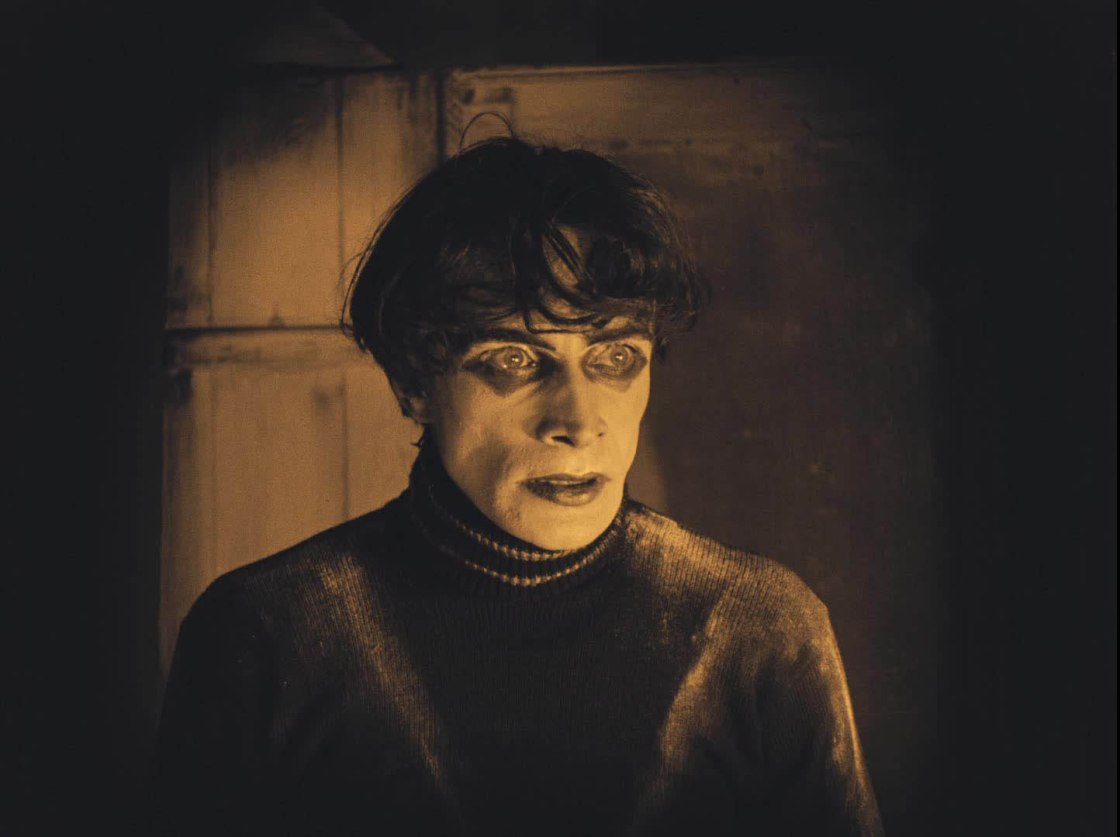
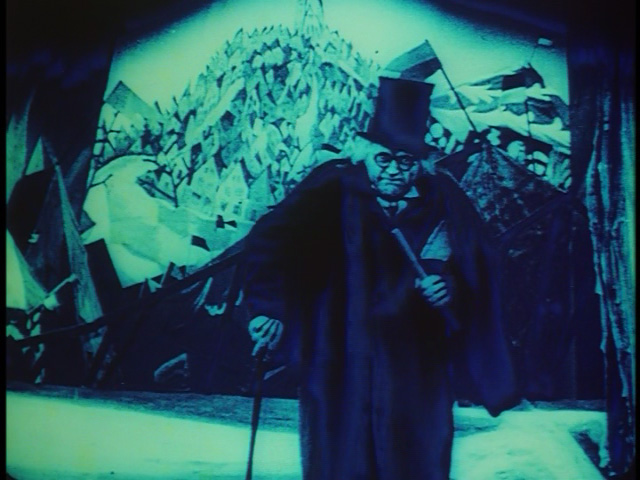
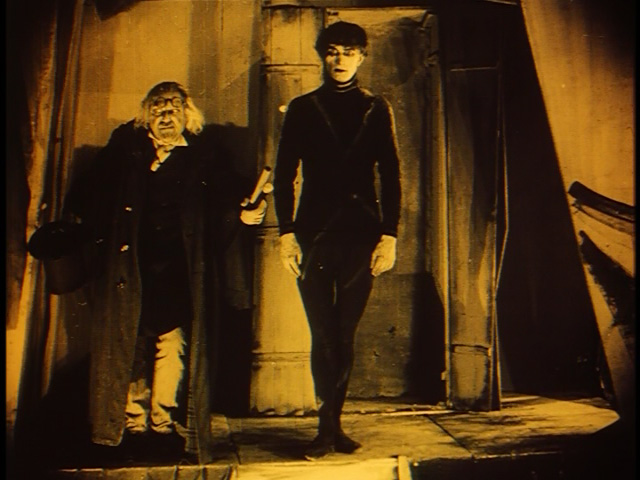

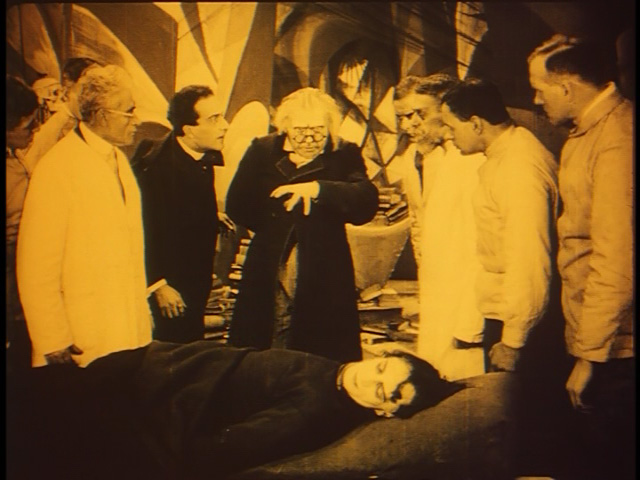

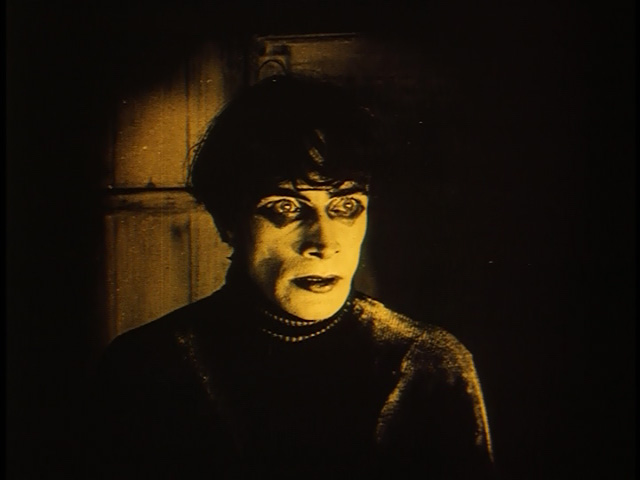



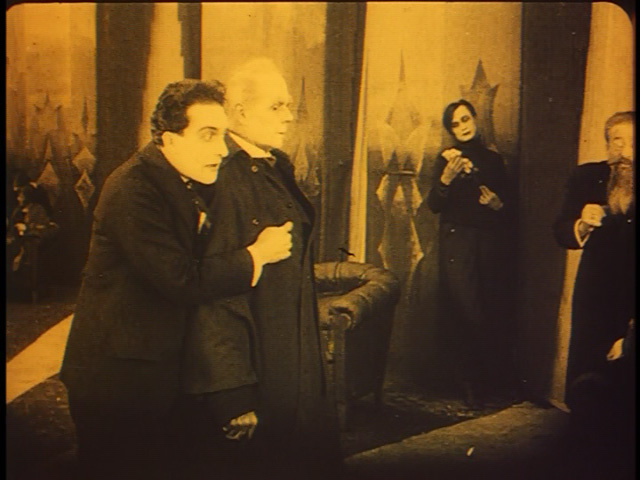




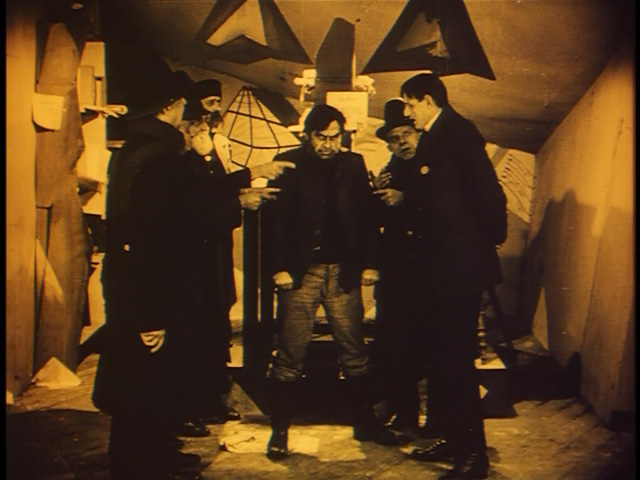
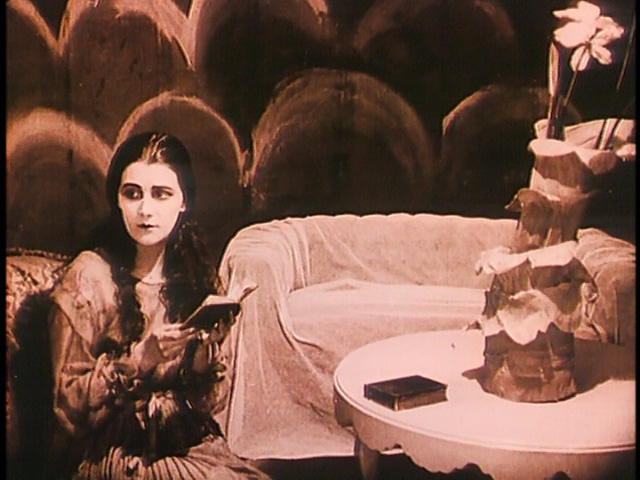


Favorite. Horror. Movie. Ever! I really thought I was the only person who watched this!
You are not alone 😉
I have never seen this film before. Thank you so much for writing about it, and giving a good background to the film before I see it.
Thank you so much! I hope you enjoy it once you get a chance to take a peek
It looks sooo creepy, but fascinating at the same time. Thanks for such a thorough review.
You’re welcome! We all need a little creepy in our lives… 😉